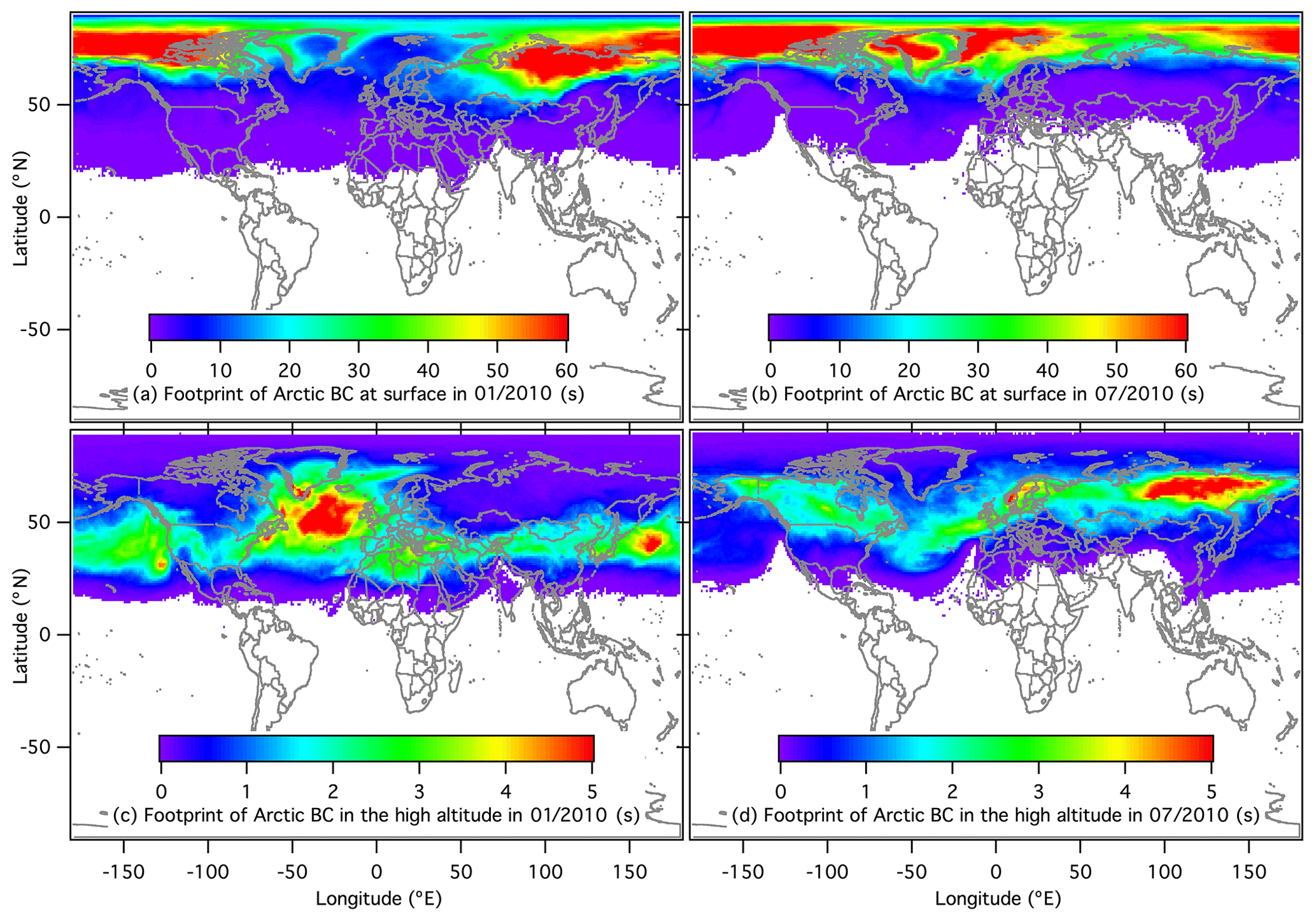FLEXPART for black carbon
FLEXPART (version 10.1) has been used to simulate the potential emission sensitivity of atmospheric black carbon (BC) present over the Arctic (north of 66°N). For example, Zhu et al., 2020 found that the potential emission sensitivities (footprint) of Arctic BC showed different patterns with respect to altitude.
The Arctic surface is sensitive to emissions at high latitudes (>60°N). Air masses stayed for over 60 s in each of the 1° grids from the eastern part of northern Eurasia and the Arctic Ocean before being transported to the Arctic surface in the winter, represented by January (Fig. a). In comparison, during the summer, represented by July, BC at the Arctic surface was mainly affected by air masses that originated from the Arctic Ocean and the Norwegian Sea (Fig. b). In January, air masses hovered over the Bering Sea and the North Atlantic Ocean before arriving at the Arctic (Fig. c). Central to east Siberia was the most sensitive region for BC at high altitudes in the Arctic in July (Fig. d).
FLEXPART-simulated BC data agreed well with observations at Arctic sites, i.e., Utqiaġvik, Alert, Zeppelin, and Tiksi. BC at the Arctic surface was sensitive to local emissions and those from nearby Nordic countries (>60∘ N). These results emphasize the role of anthropogenic emissions such as gas flaring and development of the Northern Sea Route in affecting air quality and climate change in the Arctic. Anthropogenic emissions in the northern regions of Russia were the main source (56 %) of Arctic surface BC annually. In contrast, BC in the Arctic at high altitudes was sensitive to mid-latitude emissions (30–60∘ N). Although they are geospatially far from the Arctic, anthropogenic emissions in East Asia made a notable (40 %) contribution to BC in the Arctic at high altitudes annually. Open biomass burning emissions, which were mainly from Siberia, Alaska, and Canada, were important in summer, contributing 56 %–85 % of BC at the Arctic surface and 40 %–72 % at Arctic high altitudes.

Zhu et al., 2020, https://doi.org/10.5194/acp-20-1641-2020